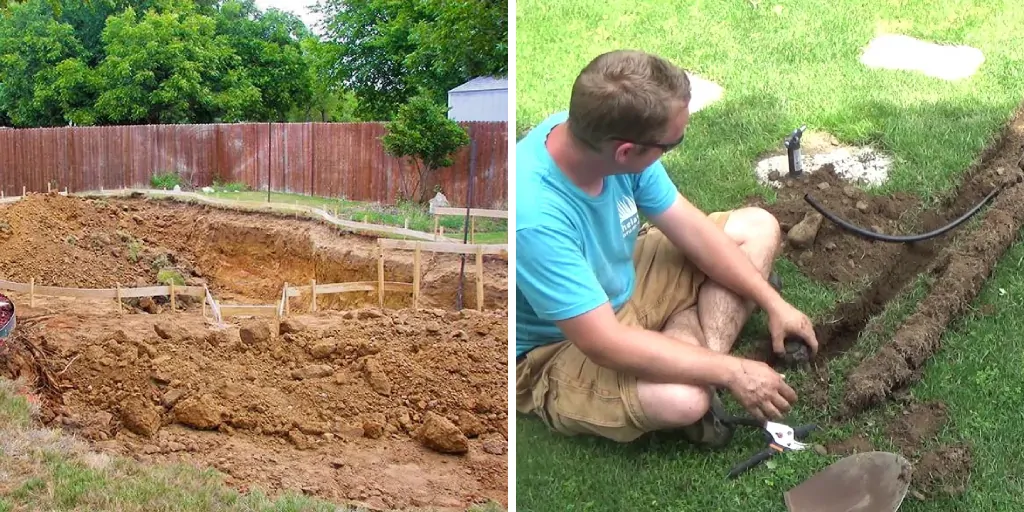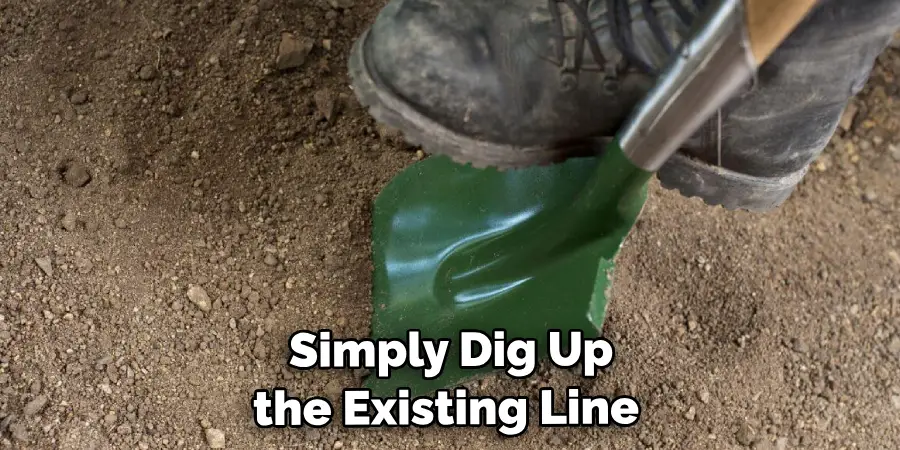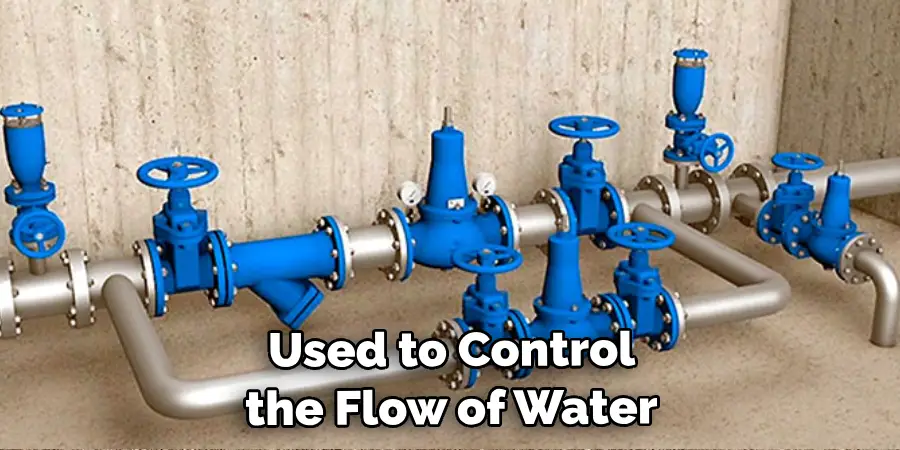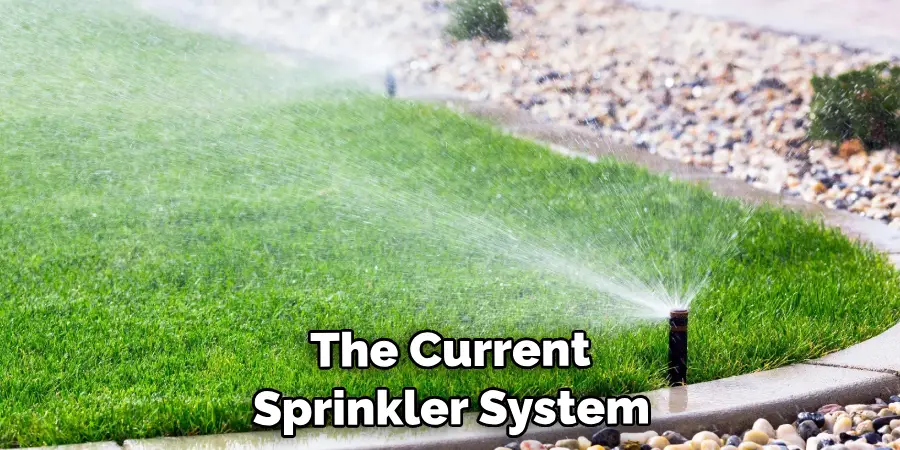Modifying your landscaping or making adjustments to your property often involves the need to reroute sprinkler lines. Whether you’re expanding your garden, adding new structures, or reimagining your outdoor space, understanding how to reroute sprinkler lines is essential for maintaining an efficient irrigation system.
In this comprehensive guide, we will explore the step-by-step process of rerouting sprinkler lines, from planning and mapping out the new layout to executing the necessary adjustments without disrupting the functionality of your irrigation system.

Homeowners and gardening enthusiasts will gain valuable insights into the tools, materials, and techniques required to successfully reroute sprinkler lines, ensuring that plants receive adequate water coverage in the updated landscape. By mastering the art of rerouting sprinkler lines, individuals can seamlessly adapt their irrigation systems to evolving outdoor needs while promoting the health and vitality of their green spaces.
Reasons for Rerouting Sprinkler Lines
There can be several reasons why you might need to reroute your sprinkler lines. Some of the common reasons include changes in landscaping, repairs or maintenance, and installation of new features such as a pool or patio. In this section, we will discuss each of these reasons in detail.
Changes in Landscaping
One of the most common reasons for rerouting sprinkler lines is changes in landscaping. As your landscape evolves, you may need to add or remove plants, trees, and other features. This can alter the water requirements of your lawn and garden and make it necessary to adjust the layout of your sprinkler system. Moreover, as plants grow, they can block the spray from existing sprinklers, making it necessary to reroute the lines to ensure proper coverage.
Repairs or Maintenance
Another reason for rerouting sprinkler lines is repairs or maintenance. Over time, your sprinkler system may develop leaks, clogs, or other issues that require attention. In some cases, the best solution may be to simply replace a section of the line altogether by rerouting it. This can save you time and money in the long run, as it eliminates the need for frequent repairs and ensures your system is functioning at its best.
10 Methods How to Reroute Sprinkler Lines
1. Digging Up the Line

One of the most common methods for rerouting sprinkler lines is to simply dig up the existing line and replace it with a new one. This method requires some digging, but it is relatively straightforward and can be done without much specialized equipment.
It is important to note that this method may not be suitable for areas with hard soil or thick roots, as it can be difficult to dig through them. Additionally, this method may also require you to purchase additional fittings and pipe in order to extend the line if necessary.
2. Inserting a Tee Fitting
If you need to add a branch off of an existing line, then you can use a tee fitting in order to do so. A tee fitting is essentially a three-way connector that allows two pipes to join together at an angle. This type of fitting can easily be inserted into an existing line in order to create a branch off of it. It is important to make sure that the fitting is properly sealed in order to prevent any leaks from occurring.
3. Diverting Water Flow
If you need to reroute your sprinkler lines but don’t want to go through the hassle of digging them up, then you can try diverting water flow instead. This involves using valves or other devices in order to redirect water from one line into another without having to actually move or alter the existing lines themselves.
This method may require some additional fittings or valves depending on your specific setup, but it can be an effective way of rerouting your sprinkler lines without too much effort.
4. Adding Valves

Adding valves is another way of rerouting your sprinkler lines without having to dig them up and replace them entirely. Valves are used in order to control the flow of water between different sections of pipes, allowing you to control where water flows without having to physically move or alter any pipes themselves. This method requires some additional fittings and valves depending on your specific setup, but it can be an effective way of rerouting your sprinklers without too much effort involved.
5. Replacing Sprinkler Heads
Replacing your existing sprinkler heads with new ones is another way of rerouting your sprinkler lines without having to dig them up and replace them entirely. By replacing old heads with newer models, you can change where water flows without having to actually move any pipes around yourself – all you need are some new heads! It’s important that these heads are compatible with your current setup, though; otherwise, they won’t work correctly and could cause problems down the road!
6. Using Flexible Pipes
Using flexible pipes when installing new sprinkler systems is becoming increasingly popular as they allow for easier installation and more flexibility when routing lines around obstacles such as trees or shrubs in the yard.
Flexible pipes are typically made from PVC material which makes them quite durable and resistant to cracking or breaking due to corrosion over time, like traditional rigid metal piping would experience after several years outside exposed elements such as rain & sun exposure. Flexible piping also comes pre-fitted with connectors, making installation much simpler than traditional rigid metal piping.
7. Splicing Existing Lines

Splicing existing lines together allows for easier routing around obstacles such as trees & shrubs, while also allowing for minor changes such as adding branches off main runs. Splicing involves connecting two pieces of pipe together by cutting away part of each end & inserting a splice coupling.
The coupling should fit snugly between both ends & should have been secured tightly with clamps before being covered with waterproof tape. When splicing, ensure all connections are secure & leak-free before burying underground.
8. Laying New Lines
Laying new lines allows for more flexibility when routing around obstacles such as trees & shrubs while also allowing for major changes such as adding branches off main runs. When laying new lines, make sure all connections are secure & leak-free before burying them underground, using clamps & waterproof tape wherever necessary. Additionally, make sure all joints are properly sealed using approved sealant products prior to burying them underground.
9. Utilizing Existing Manifolds
Utilizing existing manifolds allows for easier routing around obstacles such as trees & shrubs while also allowing for minor changes such as adding branches off main runs. Manifolds consist of several outlets connected directly into one supply pipe, which feed multiple zones within a system simultaneously.
Utilizing existing manifolds requires minimal installation work compared with running individual supply pipes from each zone back towards the main valve box – saving time & money on labor costs during the installation process!
10. Installing Timers/Controllers
Installing timers/controllers is an efficient way to reroute sprinkler lines as it allows you to program and control when your sprinklers turn on and off. This can be especially useful if you need to adjust the timing or frequency of water flow in certain areas of your yard.
Timers/controllers can also help ensure that your system continues to function properly even after any construction work has been completed by automatically adjusting water flow as needed. It is important to properly install and program these devices according to the manufacturer’s instructions in order for them to work effectively.
Things to Consider When Reroute Sprinkler Lines
In addition to being an essential part of lawn maintenance, sprinkler systems are also a large investment. Over time, your landscaping and needs may change, requiring you to reroute the sprinkler lines. This task may seem daunting at first but following these simple considerations will make the process much easier.
Site Assessment

Before beginning any work, it is important to assess your yard and the current sprinkler system. Take note of any obstacles such as trees, large rocks or structures that may impede the new route of the lines. Also, consider any potential changes in your landscape in the future and plan accordingly.
Map Out New Route
Once you have assessed the site, create a map of your new sprinkler line route. This will provide a visual reference and ensure that all areas of your lawn are covered efficiently. Consider using different colors to represent each zone or section of your sprinkler system.
Choose the Right Tools
To successfully reroute your sprinkler lines, you will need the right tools. Some essential tools include a shovel, pipe cutter, flexible tubing, and couplings. It is important to have these tools on hand before beginning the project.
Conclusion
Rerouting sprinkler lines can be a little overwhelming, especially for those with no prior experience or knowledge on the topic. Thankfully, there are a few simple steps that you can take to make the process much easier — from understanding your existing system to figuring out the best place to redirect it.
With some basic tools and a lot of patience, you too can reroute your sprinkler system in no time! So don’t be discouraged, remember that any project is achievable if you take it one step at a time. Now that you have been armed with this information, go out there and show off your skills by mastering how to reroute sprinkler lines like a pro!

